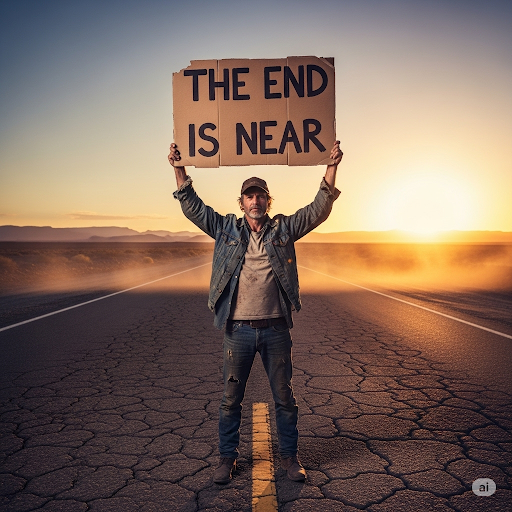By Ben Ross and Gemini AI
The dazzling vision of the New Jerusalem in the Book of Revelation paints a breathtaking picture of God's eternal dwelling with humanity. Streets of pure gold, walls adorned with precious jewels, and the radiant glory of God illuminating all – it's a scene of unparalleled beauty and holiness. But as we contemplate this celestial city, a question arises: will this resplendent metropolis encompass all of redeemed humanity, or will there be a world, and perhaps even people, existing beyond its pearly gates?
Scripture offers compelling clues that suggest the New Jerusalem, while central, may not be the exclusive domain of all saved individuals. The final chapters of Revelation provide intriguing details that hint at a distinction between those within the city and those outside.
The Inhabitants Within:
The New Jerusalem is explicitly described as the home of those whose names are "written in the Lamb's book of life" (Revelation 21:27). Entry into this sacred space is contingent upon being cleansed and righteous. Revelation 22:14 speaks of those "who do His commandments" having the right to the tree of life and access through the city gates. This implies a specific group of individuals who have met God's criteria for dwelling in His immediate presence.
A Distinct "Outside":
Conversely, Revelation starkly contrasts the purity within the city with a distinct "outside." Revelation 22:15 declares, "Outside are the dogs, those who practice magic arts, the sexually immoral, the murderers, the idolaters, and everyone who loves and practices falsehood." Similarly, Revelation 21:8 lists a catalog of unrepentant sinners whose fate lies in the "lake of burning sulfur," a place clearly outside the holy city. These passages unequivocally establish a separation between the righteous within and the unrighteous excluded.
Interpretations and Nuances:
The nature of this "outside" has been a subject of theological discussion. One interpretation views it as the eternal realm of the damned, utterly separated from God's presence and the joy of the New Jerusalem. The high and formidable walls of the city (Revelation 21:12) symbolize the impenetrable barrier between holiness and unholiness.
However, another perspective suggests a more nuanced picture. The description of the city gates as perpetually open (Revelation 21:25-26) hints at a potential for movement between the inside and the outside. This has led some to consider the possibility of saved individuals existing on the "new earth" described in Revelation 21:1, who may have access to the New Jerusalem but not reside within its walls. These individuals, having been redeemed, would not be among those listed in Revelation 22:15 and 21:8.
Imagine a vast and gloriously renewed earth, free from the scars of sin and filled with the presence of God. Within this paradise stands the magnificent New Jerusalem, the ultimate sanctuary. Perhaps the open gates signify the ease with which the redeemed can move between the central city and the wider, equally transformed creation.
A Matter of Perspective:
It's crucial to remember that the imagery in Revelation is often symbolic, painting a profound spiritual reality in vivid terms. Whether the "outside" is solely the realm of the lost or a broader expanse of the new creation inhabited by other saved individuals remains a point of interpretation.
Conclusion:
While the New Jerusalem stands as the pinnacle of God's restored creation and the intimate dwelling place of the faithful, scripture strongly suggests a distinct "outside." This "outside" undoubtedly includes those who have rejected God and embraced evil. However, the possibility of other redeemed individuals existing on the new earth, with access to the glorious city, offers a compelling vision of a vast and vibrant eternal reality. Ultimately, the focus remains on the unparalleled beauty and holiness of the New Jerusalem, the central point of God's eternal reign and the ultimate inheritance of those whose names are written in the Lamb's book of life.





